Scuba diving in Kauai can be a unique experience unlike any of the other islands in the chain. Divers go to the Big Island of Kona for the Manta Rays, Oahu for the shipwrecks, and Maui for the turtles, hammerhead sharks, and caverns of Lanai. From my experience, Kauai has the largest variety of sea life and topography to offer a diver, with a laid back small town atmosphere to enhance it.
The best time to go scuba diving in Kauai is during the summer months with regard to water temperature and access to the ocean. During the summer, the water temperature averages around 78-81 degrees, and it dips in winter closer to 71-74 degrees.
I usually find that a 3mil full wetsuit works for me all year long. But for the summer months, I will often dive in a shorty or just a rash guard if I’m only doing one dive. The prevailing ocean swells and currents generally dictate access to the water.
The North side of the island is usually only accessible during summer, as the swells get pretty big during the winter. The West Side (Na Pali Coast) and East Side (Kapaa/Lihue) are generally not accessible to dive boats or shore diving because of the remoteness to the ports and rugged shore conditions with large and dangerous wave action. About 95% of scuba diving is done off the South Coast of Kauai, which is better protected most of the year.
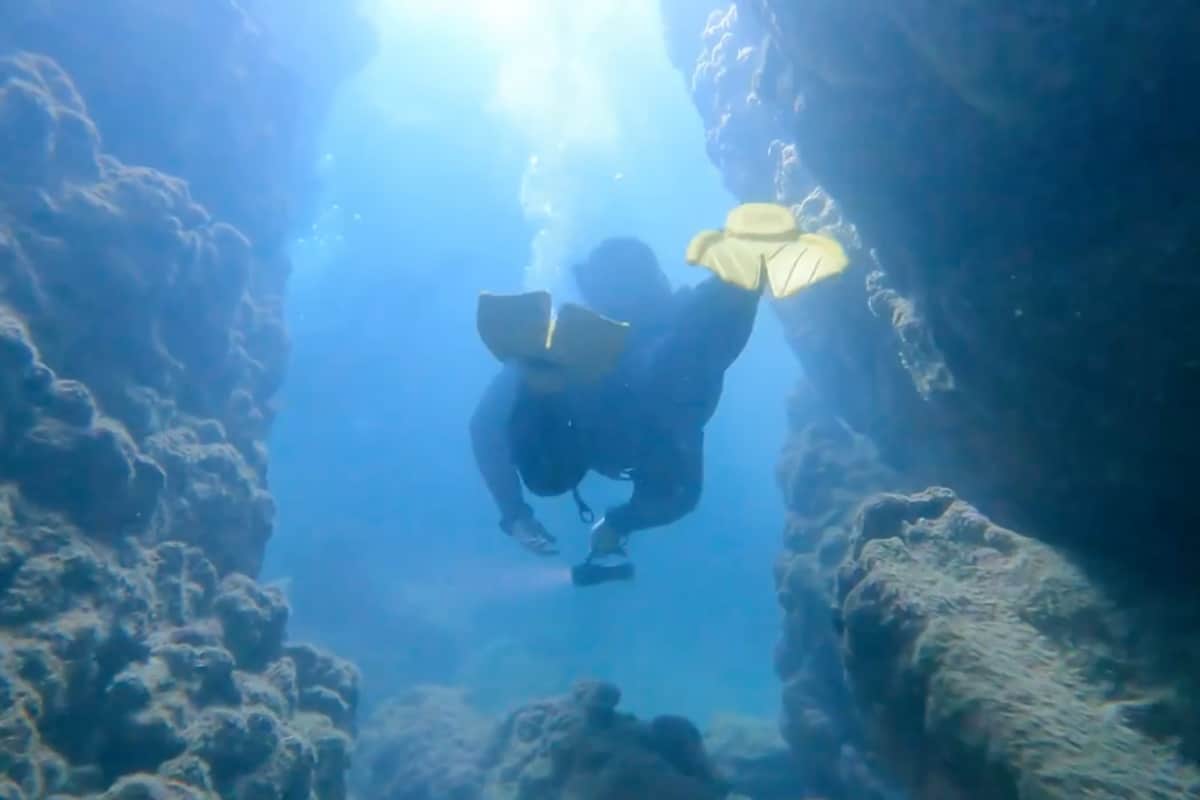
There are no less than 10 dive shops on the island, making it very easy to find an option to fit your schedule and needs. All but one shop is located on the South Shore near Poipu, and that last one is in Anahola toward the middle of the island. So if you’re staying on the North Shore and want to scuba dive, you can expect a good 1 to 2-hour drive in the morning, with one exception I will cover later regarding Tunnels shore diving.
All of the shops offer diving for both certified and non-certified divers. Non-certified divers pay a little more because they get an hour of classroom time and personal instruction. I see these mini-classes all the time at a local shore dive site and the equipment and instruction always look safe and fun.
It’s a great way to get new divers into the sport. I usually bring my own scuba gear when I visit Kauai because it saves me a little money and I am more comfortable using my own equipment. But I have also rented and the gear is always new and state of the art.
Each dive shop operates its own boat. For boat diving, I have always used Seasport Divers in Koloa because they are the largest shop with two boats, and they are always easy to schedule. For shore diving, I have always gone with Fathom Five because they are one of only two shops that offer diving at Tunnels on the North Shore.
Best Scuba Diving Sites In Kauai
All of the dive shops offer guided shore dives at Koloa Landing on the South Shore. I have never heard any complaints about any of the other dive shops, so I assume they are all top-notch as well.
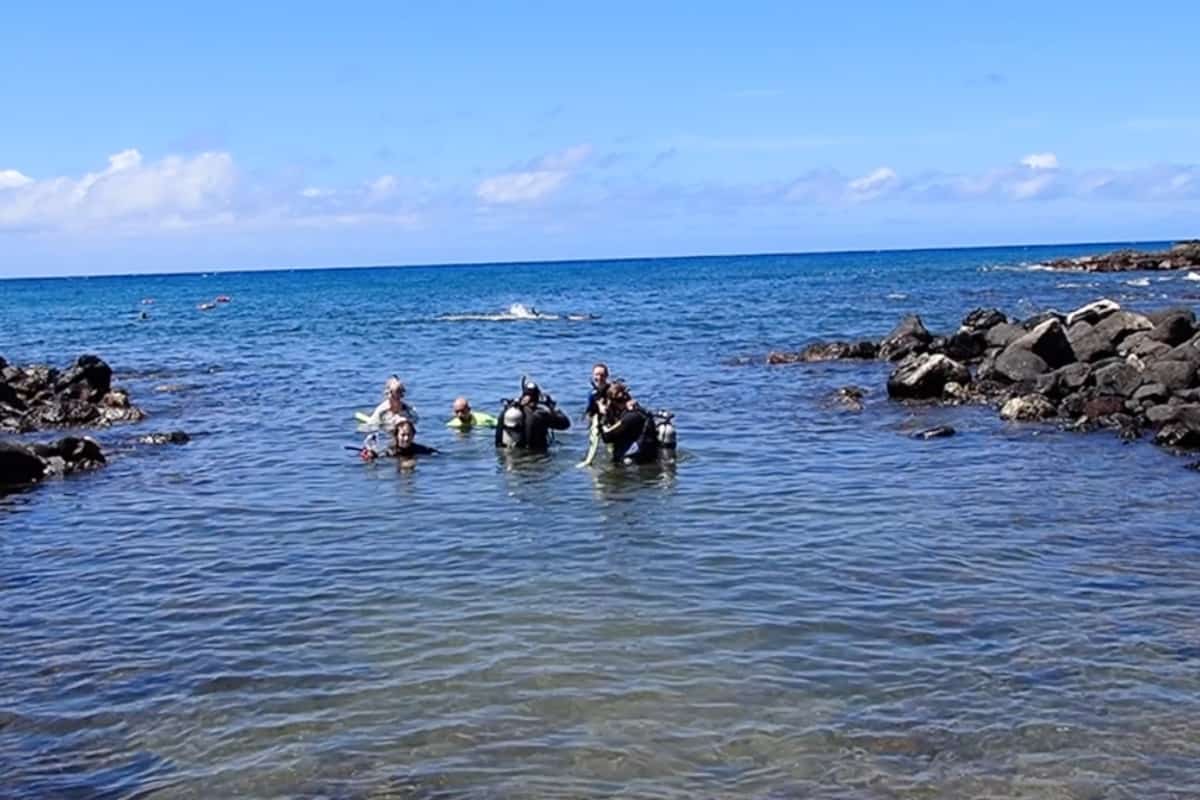
There are three main types of diving to do on Kauai: boat dives, shore dives, and a special option for advanced divers only on the nearby island of Niihau (The Forbidden Island). I’ve done them all, so I will try and give you a brief overview of each.
Boat dives all leave out of Port Allen on the South Coast. The harbor is only a short 5-10 minute drive from any of the dive shops. In general, you would call up the dive shop to book your trip and they will give you specific instructions. From my experience with Seasport, we usually meet at the shop at 7 am and shuttle to the boat to leave at 8 am for a two-tank trip.
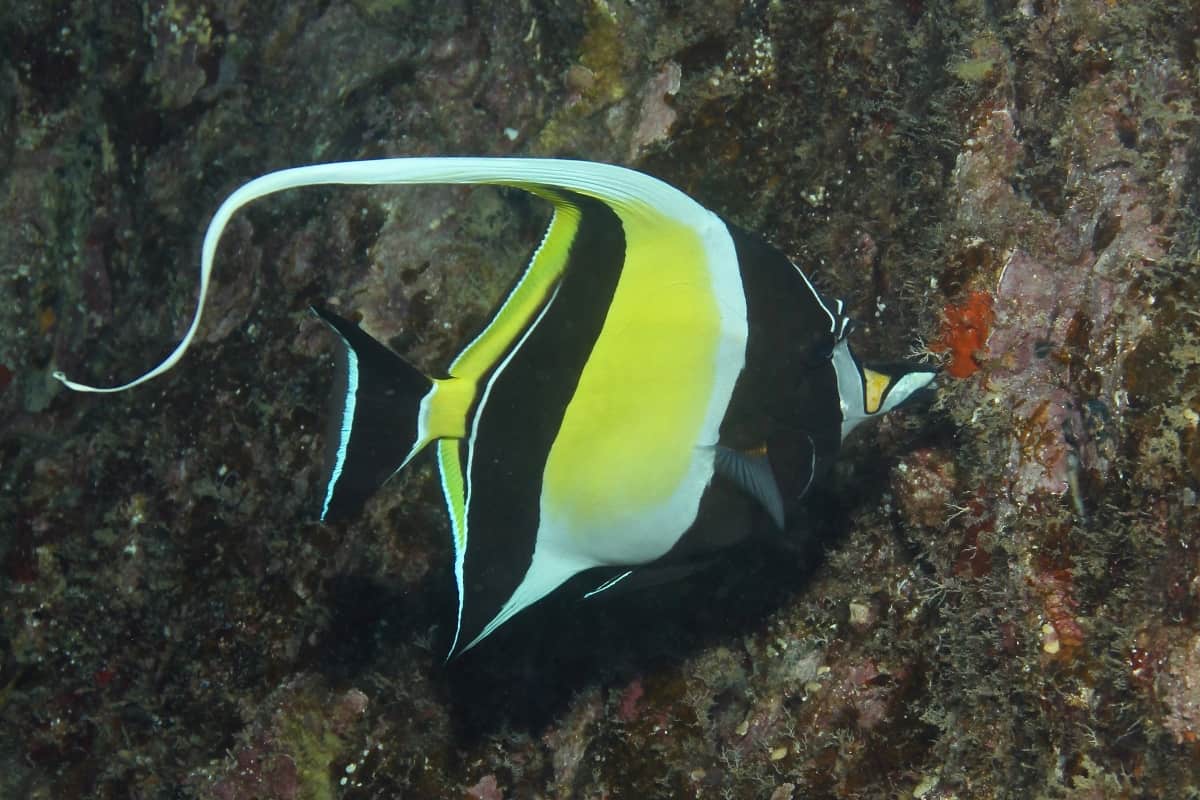
The morning trips usually offer calmer conditions, but there are usually afternoon boats as well. You don’t need a buddy to go on a boat trip. Every boat will have a Divemaster to guide the group. Every boat trip I’ve done will randomly pick one of twenty different dive sites and usually reserve one stop at Sheraton Caverns, an iconic dive site not to be missed.
Sheraton Caverns
Sheraton Caverns is a huge lava rock formation consisting of large overhangs and arches pitted with many small caves. This makes it a perfect offshore resting spot for many of the giant sea turtles in the area. I’ve seen turtles here so large I often gasp in surprise!
Guides will generally lead their groups through the small maze of caverns and arches and finish the dive on top of the rocky portion where a nice coral garden hosts a huge variety of reef fish. This is where you will see all the snorkelers from the boats which often accompany the trips.
Many of the dive sites are similar to what you will see in the way of sea life and coral, along with some unique swim-throughs in the rocks. Very often you will get to see some rather large white-tip reef sharks. Hawaiian monk seals and dolphins can occasionally be seen, but rarely.
Niihau
The ultimate boat dive would have to be an all-day trip to Niihau. I’ve only done this trip once because it was such a long and rough trip but it was well worth it for the experience.
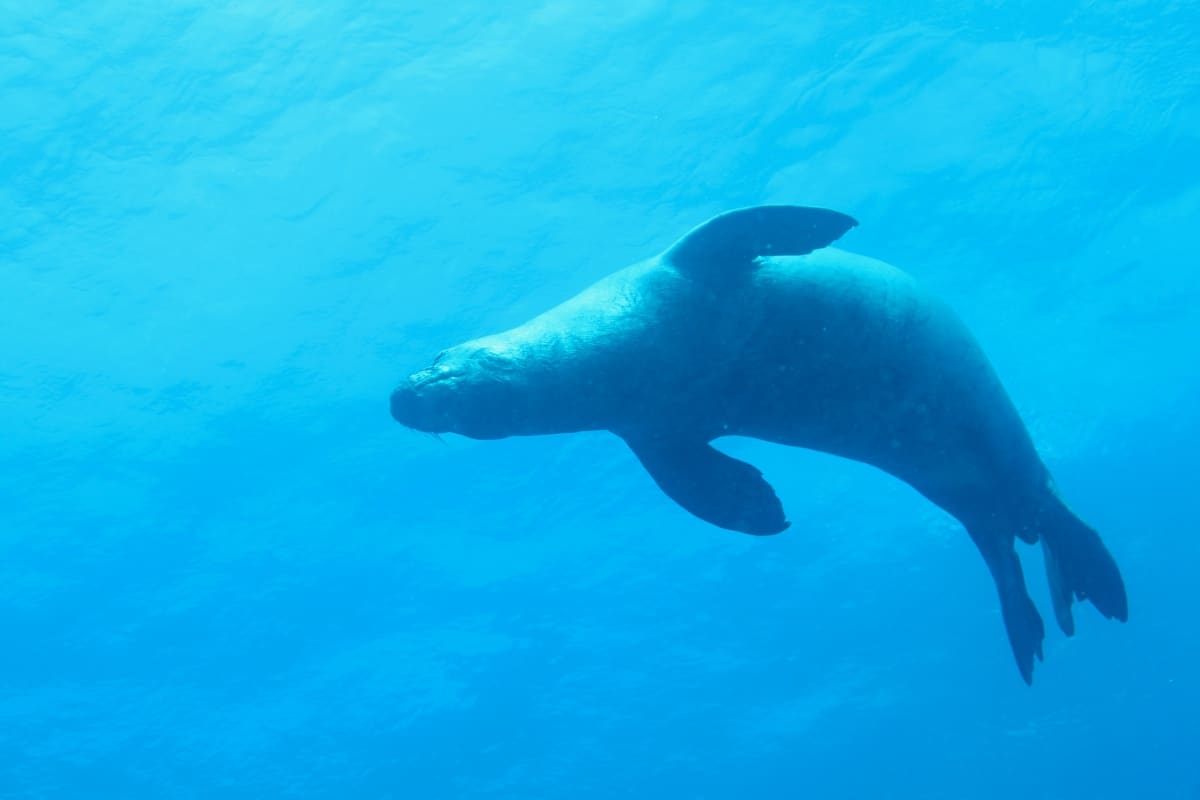
The ocean crossing from Port Allen to Niihau takes about 2-1/2 hours in the morning and is typically a long but smooth crossing. Once you get there and put your face in the water you will instantly understand why this place is special.
My first dive here was a site called “Vertical Awareness.” It was very appropriately named. The water was so crystal clear that looking down to the bottom looked like it was only a hundred feet, but it was closer to two hundred feet. We swam along a vertical wall covered in fish and you could actually see the HUGE open-ocean fish and sharks swimming just offshore.
I swam down to a shelf about 100’ down to sit just 20 feet away from a huge Hawaiian Monk Seal that barked at me to say hello (probably stay away). It was just magical. All of the other dive sites had better visibility than on Kauai as well. The swim-through arches were bigger and the sea life was more abundant.
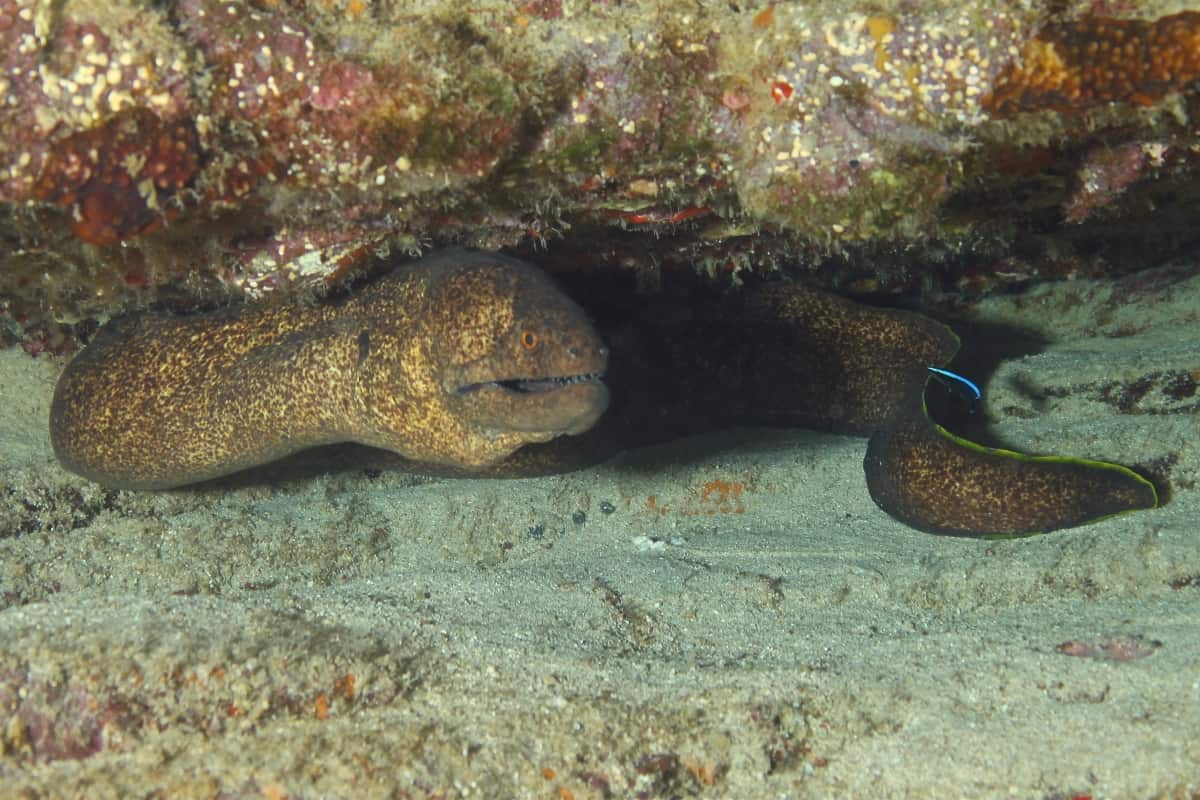
The only downside was the trip back. The afternoon swells were MUCH bigger. Everyone got seasick but the crew and myself (I use motion sickness patches) which made it a very long and bumpy 3-hour cruise back.
Dive shops only schedule this trip when the conditions are favorable and mostly during the summer months. I highly recommend it if you can. For me, it was the best diving of all of the Hawaiian Islands rolled into one magical day, and I can’t wait to do it again someday.
Koloa Landing
Shore diving on Kauai is limited to only a couple of locations, but it couldn’t be easier. The best-known shore dive site is Koloa Landing on the South Shore. There is a sand & gravel parking lot with a porta-potty and enough parking for maybe 20 cars near the Koloa Landing Resort.
There is an old boat ramp that you simply walk down into a sandy bottom, which leads to a field of loose boulders underwater. High tide is better to get over those boulders. You will almost always see some snorkelers here along with 2-3 small classes of scuba divers.
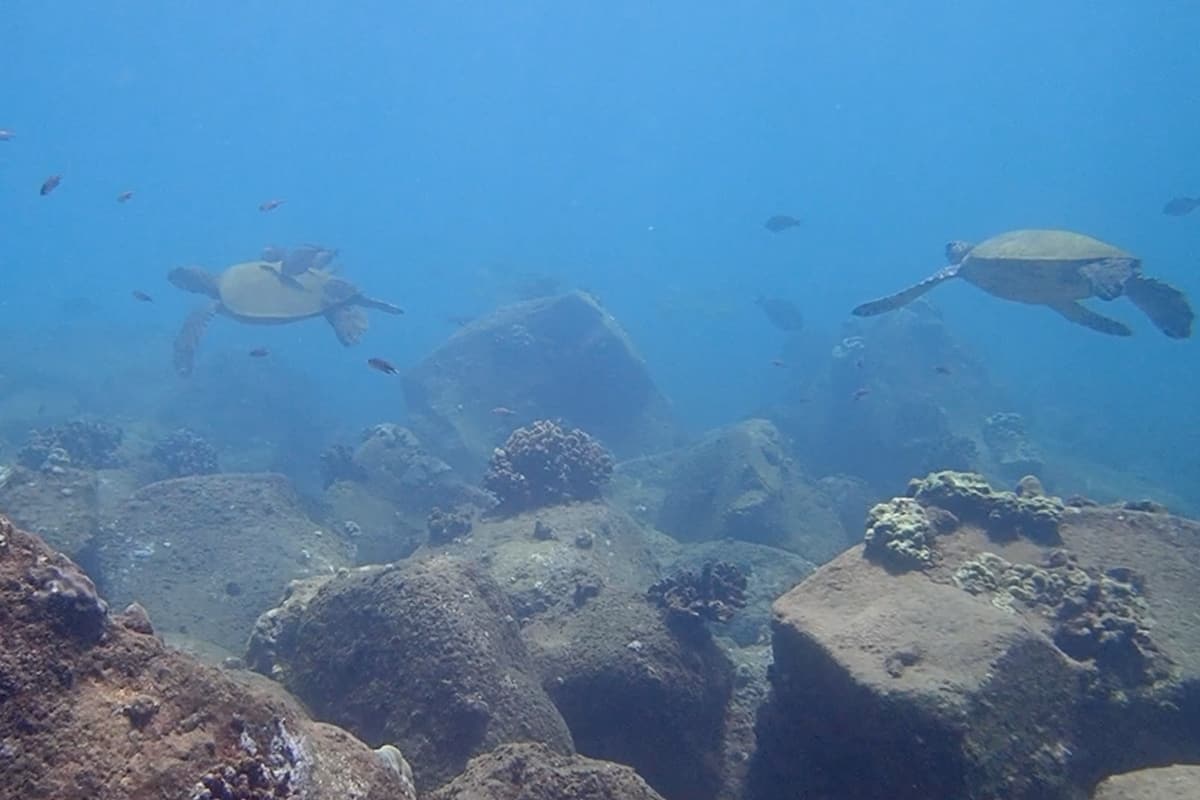
As I mentioned earlier, all of the dive shops use this site for their guided tours of both certified and non-certified divers. The easy entry access and generally calm water make it ideal for new divers. Snorkelers are generally frustrated here as there is a lot to see, but there is a freshwater stream next to the parking lot that creates brackish water at the surface and a blurry view of the fish below.
But if you are scuba diving you are in for a real treat. Navigation is easy, so experienced divers probably can skip the tour option. Straight out from the ramp, the boulders end at a sandy bottom. You can follow the boulders to the left or right at depths in the 25-40’ range.
To the left, I have had the most success finding a huge variety of eels hiding in the coral, including my favorite Hawaiian dragon eel. I have found as many as 7 different species of eel on one single dive here in the past.
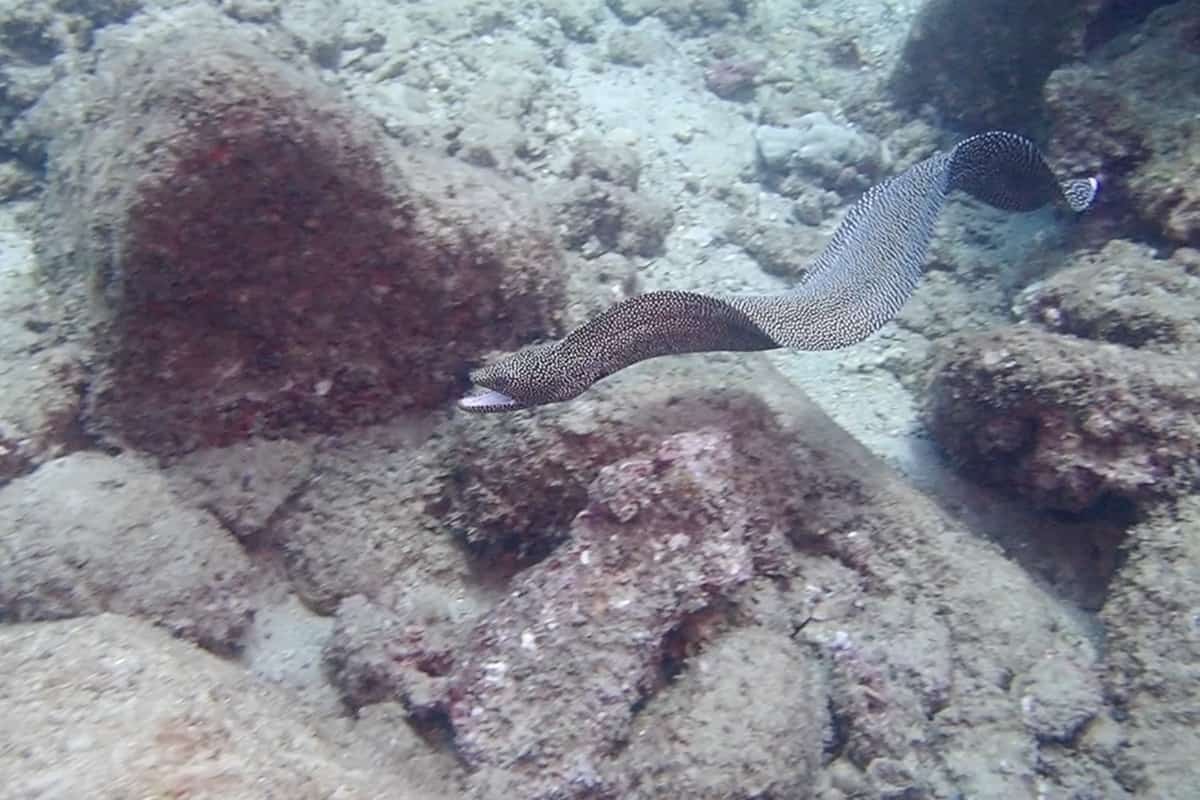
If you head right you will quickly find a pile of large boulders bordering the sand where you will likely find large turtles sleeping in crevices. I have seen as many as 8 giant turtles coming and going in this single spot. It is breathtaking to experience at a safe distance. I have never seen a shark here, but in general you can find everything here you will see on a boat dive.
I have been told there are frogfish to be found, but I have yet to see one so the search continues. There is plenty to explore, and usually very calm conditions. Visibility here seems to average around 50-60’ for the days I have visited.
Tunnels
A Tunnels Beach shore dive is a very unique experience all divers should enjoy. There are only two dive shops that run tours here, Fathom Five and Kauai Scuba Adventures (KSA). You can book your trip on the phone and simply meet them at the site.
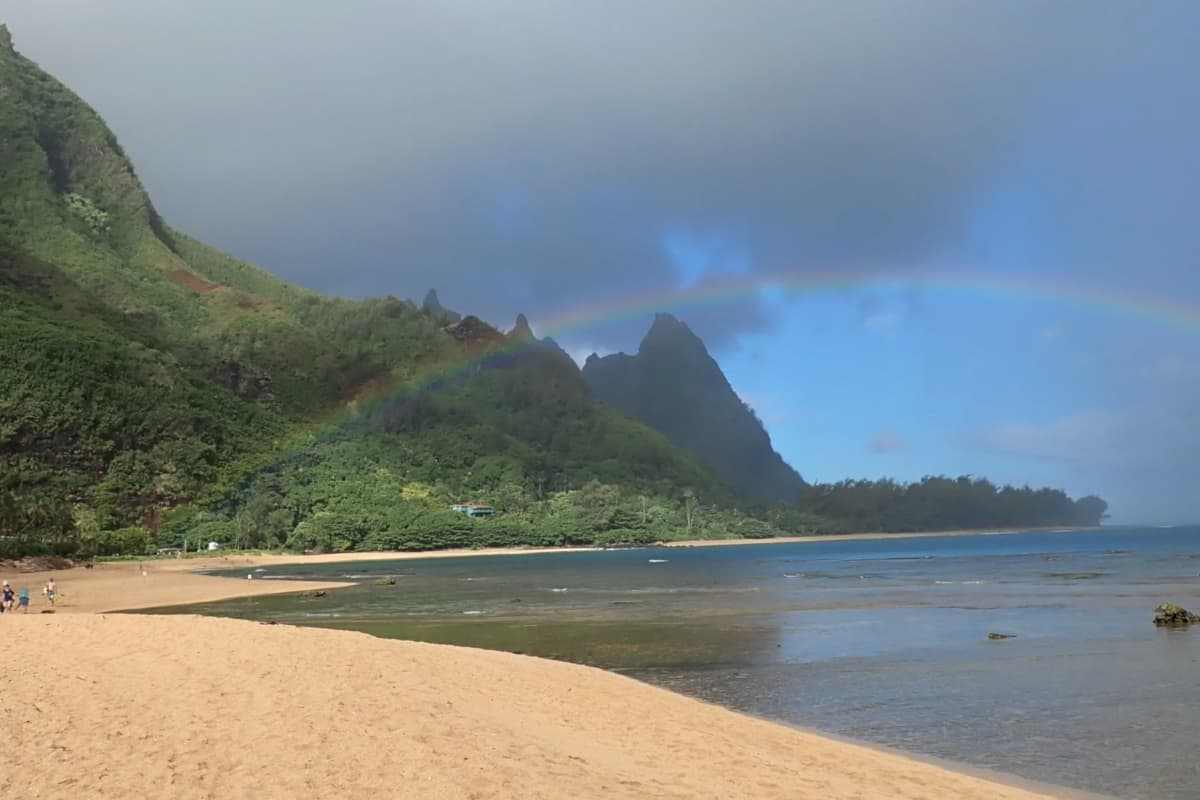
I have done this trip with Fathom Five a few times, so I cannot comment on KSA, but I am sure the experience is comparable. If you are already staying on the North Shore, on Princeville or Hanalei, you are in luck with only a 20-30 minute drive in the morning.
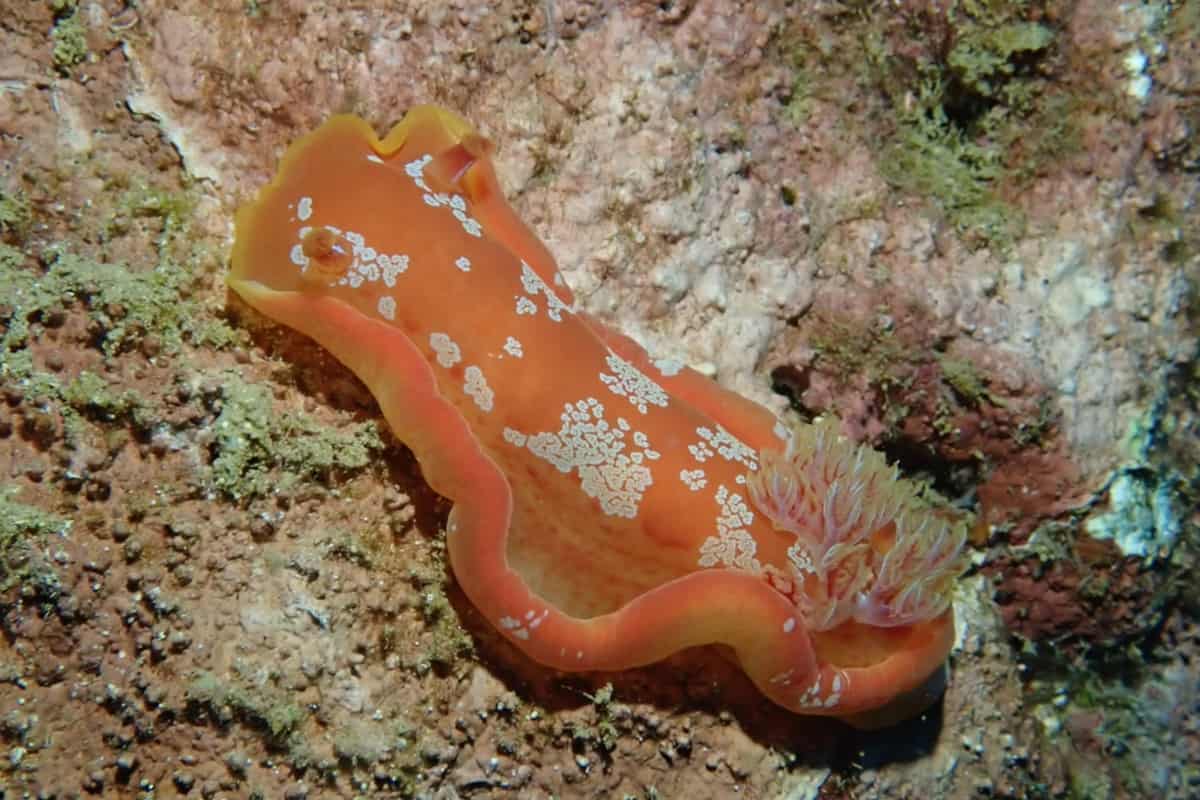
From the South Shore, you should plan on a 1.5–2 hours commute. The dive shops will email you easy directions to the meet-up spot at 8:00 am. Parking is now convenient, as they will direct you to adjacent private parking with a local resident who is diver-friendly.
Many of the locals in the areas are overly protective of the reef and feel divers are causing damage. But I can attest that divers walk exclusively in the sand where the thousands-per-year snorkeling kids and adults are the ones walking on the reef.
There are no facilities to be found from the meeting spot to the dive spot, so if you can’t wait you can drive an extra few hundred yards to the main parking lot for Ha’ena State Beach to find a public bathroom. Once you arrive, get ready for a high level of service you should certainly tip for at the end.
If you need any scuba equipment it will be waiting for you. Shop employees will load the tanks, weights, and assembled gear into beach carts with balloon wheels and haul them down the road for you and across the sandy beach. I’ve done this once before myself and it’s no joke!
After a dive briefing from the guides, you simply walk yourself to the dive site a couple hundred yards down the beach and relax under the shade of a small pine tree grove. The views from this spot are awesome with the beautiful beach and mountain backdrop.
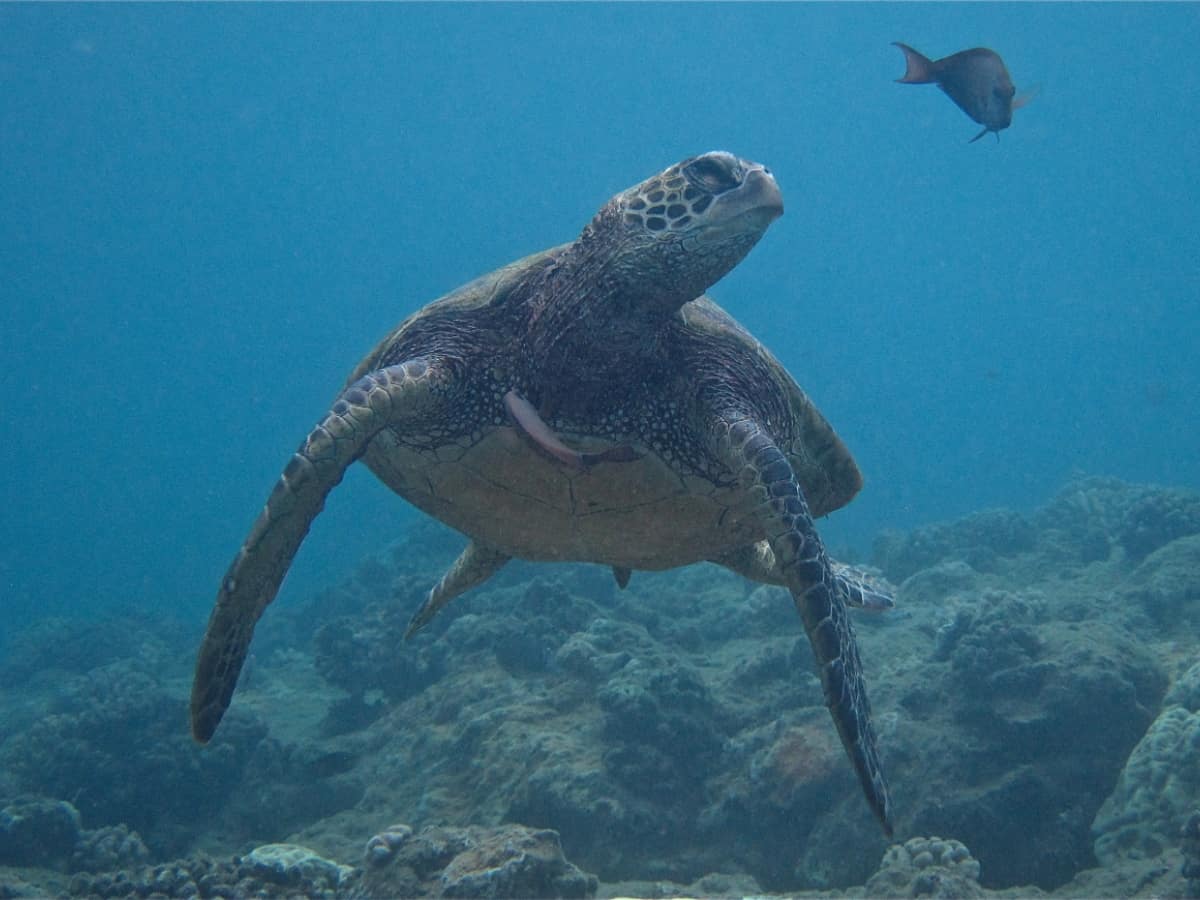
By now your gear has already been assembled for you and is floating in waist-deep water connected to the dive float/flag, making it very easy to don your BCD. There are two areas we dive into: the inner reef (along the shore under the unknowing snorkelers) and an outer reef, a short surface or bottom swim away (where you will likely see snorkel tour boats moored).
Your guide will tell you that these dives are more “topographical” dives rather than reef dives with a lot of fish. Most tours start with the inner reef, so the guide can judge everyone’s comfort level in the water before doing the crossing to the outer reef.
Both dives are relatively shallow in the 30-50’ range. Visibility will typically be 40’ in spots and up to 80’ in others. Of course, this can go way down if you happen to be at the back of the line of divers finning through a long cavern. There are tunnels and caves everywhere down here, and it’s good to have a guide that knows where to take you.
You won’t see a lot of fish, but the light shows you get from the sun peeking through the rock canopy above is jaw-dropping. I have been lucky on every dive so far that my guide located several beautiful nudibranchs (colorful sea slugs) including the Spanish Dancer.
We spotted several different eels and usually a few white-tip reef sharks within the caverns. The outer reef is more of the same amazing topography, along with a nice reef on top. There used to be a turtle cleaning station on top of the outer reef in prior years with a guaranteed turtle encounter, but that seems to have changed in recent times with the additional snorkel tour boats and hundreds of snorkelers.
It’s a shame to miss that part. But the extra time traveling through the tunnels below isn’t necessarily a bad thing either. In between dives you can simply gather in the shade and enjoy the variety of drinks and snacks provided by your dive shop while the team switches out your tank for you.
After your second dive, you can either stay and enjoy the beach or maybe drive back to Hanalei and grab some lunch and shave ice! There are no bad options while in paradise.
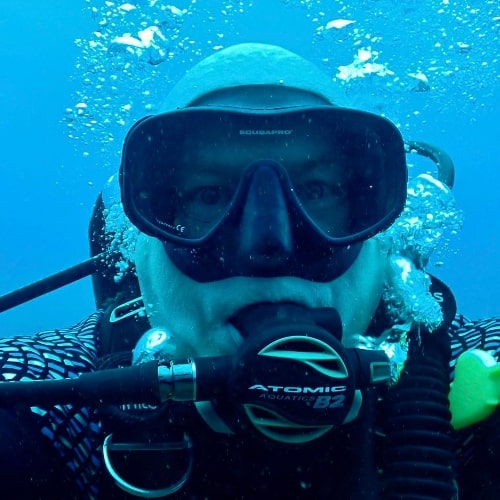
Written by: Richard Forster

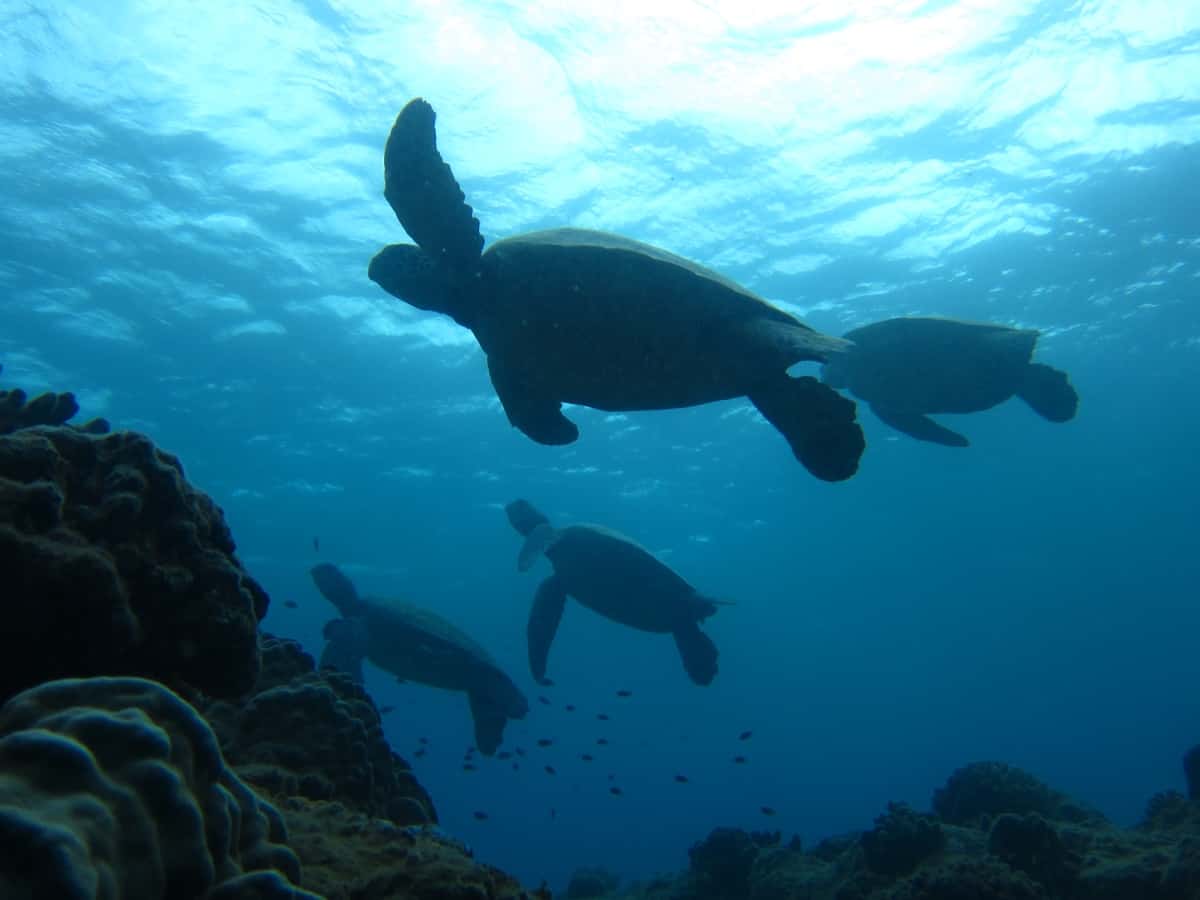
Leave a comment